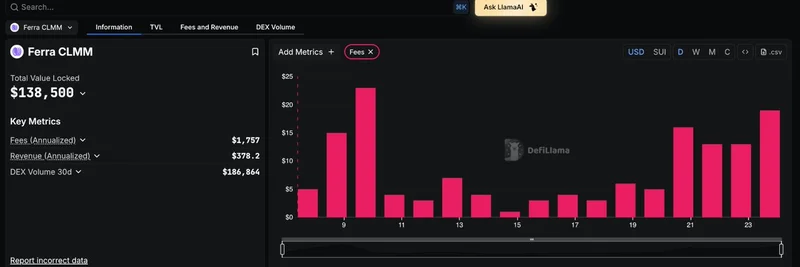TL;DR
- The token called “SCREAM” appears under multiple blockchains and contracts. The BNB Chain contract you asked about is 0xa1fea345b7e45a03a2a76a6871559546a2a12e38.
- Public data for this BNB Chain SCREAM is thin and inconsistent across trackers. That’s a red flag and means you should verify everything on-chain.
- Do not confuse it with the well-known Scream lending protocol on Fantom (different purpose and contract).
- If you decide to track or trade, use reputable tools and always verify liquidity, taxes, and contract permissions first.
Why there’s confusion around “SCREAM”
- Multiple projects use the SCREAM name across chains:
- Scream on Fantom is a lending protocol with contract 0xe0654C8e6fd4D7333499ac7E09f6f23DA256bF475. Different chain, different purpose.
- A meme-style SCREAM has been mentioned on Solana.
- The BNB Chain contract you’re researching is 0xa1fea345b7e45a03a2a76a6871559546a2a12e38.
- Naming overlaps can be accidental—or a tactic to ride on brand confusion. Always match the exact contract address.
What we can (and can’t) confirm from public sources
- Contract address under review: 0xa1fea345b7e45a03a2a76a6871559546a2a12e38 on BNB Chain.
- Trackers like CoinBrain and BscScan have referenced this address, but data coverage is spotty and sometimes conflicts with information for the Fantom-based Scream.
- No clear, verified official website or whitepaper for the BNB Chain SCREAM was found in the materials provided.
- Some third-party dashboards showed unusual price spikes and very low trading volume. That combination can happen with illiquid tokens or data errors—both are reasons to be cautious.
Plain-English note: BEP-20 is BNB Chain’s token standard (similar to ERC-20 on Ethereum). If a BEP-20 token has thin docs, low liquidity, and odd chart behavior, you should assume extra risk until you verify on-chain.
Don’t mix it up with Scream on Fantom
- Fantom Scream is a lending protocol token with a documented history and a separate community, docs, and contract. See Scream docs and Fantom Foundation.
- Prices and supply figures you see for “SCREAM” on CoinGecko or CoinMarketCap may refer to the Fantom token, not the BNB Chain token. Always check the contract address on those listings before you rely on the numbers.
How to verify the BNB Chain SCREAM contract yourself (DYOR)
- Confirm the address on-chain
- Open the token page on BscScan.
- Check if the contract source is verified, and look at the token’s decimals, name, and symbol.
- Review holders and distribution
- On BscScan, check the Holders tab. Watch for:
- One wallet controlling a large share of supply.
- Liquidity pool (LP) ownership concentrated in a developer wallet.
- On BscScan, check the Holders tab. Watch for:
- Inspect trading and liquidity
- Check if there’s an LP on a major DEX (e.g., PancakeSwap). Look for LP lock info (team.finance, PinkSale, Unicrypt, etc.). Unlocked LP means the issuer could withdraw liquidity at any time.
- Scan for honeypot or high-tax behavior
- Use a scanner to see if buys/sells are blocked or taxed heavily. High taxes (e.g., >10%) or blacklist functions are risk signs.
- Cross-check pricing and volume
- Compare multiple trackers (e.g., CoinBrain, CoinGecko, CoinMarketCap). If data is inconsistent or missing, proceed carefully.
- Look for an official presence
- Website, GitHub, docs, and active socials are minimum standards. No docs and sparse socials = high risk.
Potential red flags spotted in the research materials
- Inconsistent or thin data across explorers and price trackers.
- Lack of clear official documentation for the BNB Chain token.
- Reports of very low 24h trading volume alongside dramatic price changes, which can signal manipulation in illiquid markets—or simple data mismatches with the Fantom token.
None of these prove fraud, but collectively they demand caution.
If you choose to track or trade
- Always use the exact contract: 0xa1fea345b7e45a03a2a76a6871559546a2a12e38.
- Platforms and tools to consider:
- GMGN.AI tracking page for this address: https://gmgn.ai/eth/token/fV1R5sZ5_0xa1fea345b7e45a03a2a76a6871559546a2a12e38
- PancakeSwap (BNB Chain DEX): pancakeswap.finance
- BNB Chain explorer: BscScan
- Practical tips:
- Start with tiny test trades to check slippage, taxes, and whether sells execute.
- Verify LP lock and ownership before committing funds.
- Beware of Telegram-only “announcements” without verifiable on-chain actions.
Glossary (quick and simple)
- BEP-20: BNB Chain’s standard for fungible tokens (like ERC-20 on Ethereum).
- Liquidity Pool (LP): A pool of tokens on a DEX that enables trading. If it’s not locked, the creator can pull it (rug).
- Honeypot: A token that lets you buy but not sell.
- Slippage: The difference between expected and executed price; higher in low-liquidity markets.
- FDV (Fully Diluted Valuation): Price times total supply—what the market cap would be if all tokens were circulating.
Bottom line
Because SCREAM exists across chains and names, the only safe way to assess this BNB Chain token is to verify everything at the contract level. If documentation is light, liquidity is thin, and data is inconsistent across trackers, assume higher risk. Double-check the contract, LP status, holder distribution, and taxes before you trade. When in doubt, sit it out.
Useful links
- BNB Chain explorer (SCREAM contract): https://bscscan.com/token/0xa1fea345b7e45a03a2a76a6871559546a2a12e38
- CoinBrain profile for this address: https://coinbrain.com/coins/0xa1fea345b7e45a03a2a76a6871559546a2a12e38
- Scream on Fantom (not the same token): https://docs.scream.sh/
- GMGN.AI tracking/trading page for this contract: https://gmgn.ai/eth/token/fV1R5sZ5_0xa1fea345b7e45a03a2a76a6871559546a2a12e38
Disclaimer: This article is for informational purposes only and is not financial advice. Crypto assets are highly volatile and risky—do your own research and never invest more than you can afford to lose.


